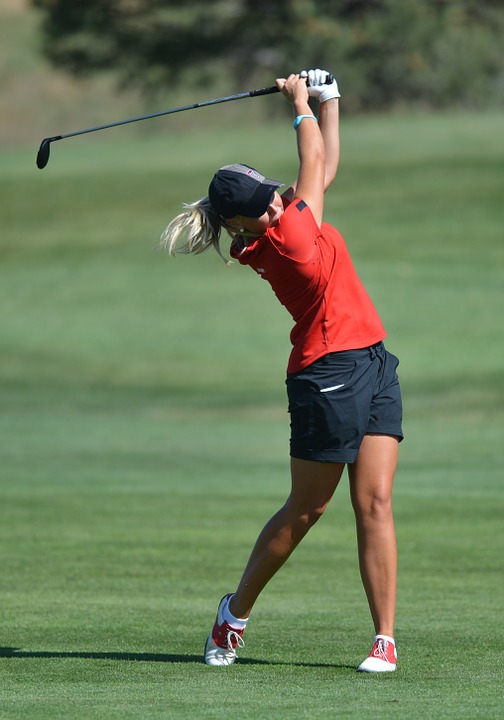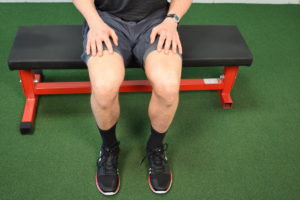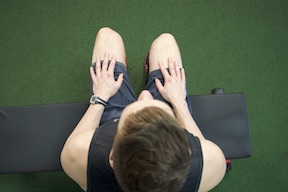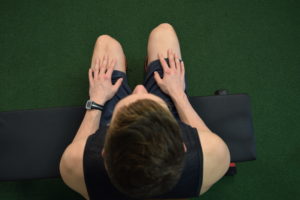
Golfers tend to blame themselves for a lack of skill when their golf swing doesn’t seem to improve as they practice. More often than not, there’s a physical limitation that results in a less than desirable swing. So really, when you think about it, it’s not a golf swing fault. It’s a body fault.
One of the most common physical limitations I find consistently in female golfers is a loss of lead hip internal rotation.
Lead hip internal rotation is what allows that ideal follow-through sought by all golfers.
A lack of lead hip internal rotation results in the following:
A premature deceleration of the club head before ball strike.
A loss of power, and therefore, a loss of drive distance
Too vertical of a swing plane.
An inside-out swing.
An open clubface at ball strike.
A substitution for a lack of hip rotation with spine rotation or side bend that may result in lower back pain!
Assessing Your Lead Hip
Take a seat and line up your feet about hip-width
Without turning your shoulders, shift your right hip back and left hip forward. This is the position of the hips in the backswing for a right-handed golfer.
Repeat the same test on the other side by shifting the left hip back and right hip forward. This is the position of the hips in follow-through for a right-handed golfer.
If you find it more difficult to shift your left hip back or your left hip doesn’t shift back as far as the right, use the following exercise sequence to “fix your fault.”
Left Pullback Exercise
Start with this left hip exercise with instruction provided by Greg Spatz from Resilient Performance Physical Therapy in New York City.
To transfer your new lead hip rotation to your golf swing, perform the following two dynamic activities. You’ll need a light medicine ball and some light dumbbells.
Golf Twister
Pin the medicine ball to your chest.
Keep weight on the inside edge of both heels at all times.
Turn your shoulders to the right and shift your weight slightly as your turn around the right hip. Shift your weight back to the left and turn your shoulders to the left.
Progressively increase the turn through the hips and then increase the speed of the exercise as you learn to control the motion.
Perform 2-3 sets of about 10 seconds.
Golf Punch
Stand with your feet approximately hip-width and hold a pair of light dumbbells at shoulder height.
Keeping your toes pointing straight ahead, turn your hips and shoulders to the right as you punch the left hand forward.
Return to the start position and immediately turn to the left and punch forward with the right hand.
Progressively increase the turn of your hips and then increase the speed.
Perform 2-3 sets of about 10 seconds.
Are you a golfer struggling with lower back pain or achieving the necessary hip rotation to play enjoyable golf?
We can help!
Call IFAST Physical Therapy at 317-578-0998 or email [email protected] for a FREE Injury Consultation and get all your questions answered. There is no obligation.
If you know someone who is struggling with lower back pain or sciatica right now,
get them to call to get a copy of The IFAST PT Sciatica Solution.
It’s totally FREE!
Call IFAST Physical Therapy at 317-578-0998 or email [email protected] to get a copy of The IFAST PT Sciatica Solution.



0 Comments
Join the conversation